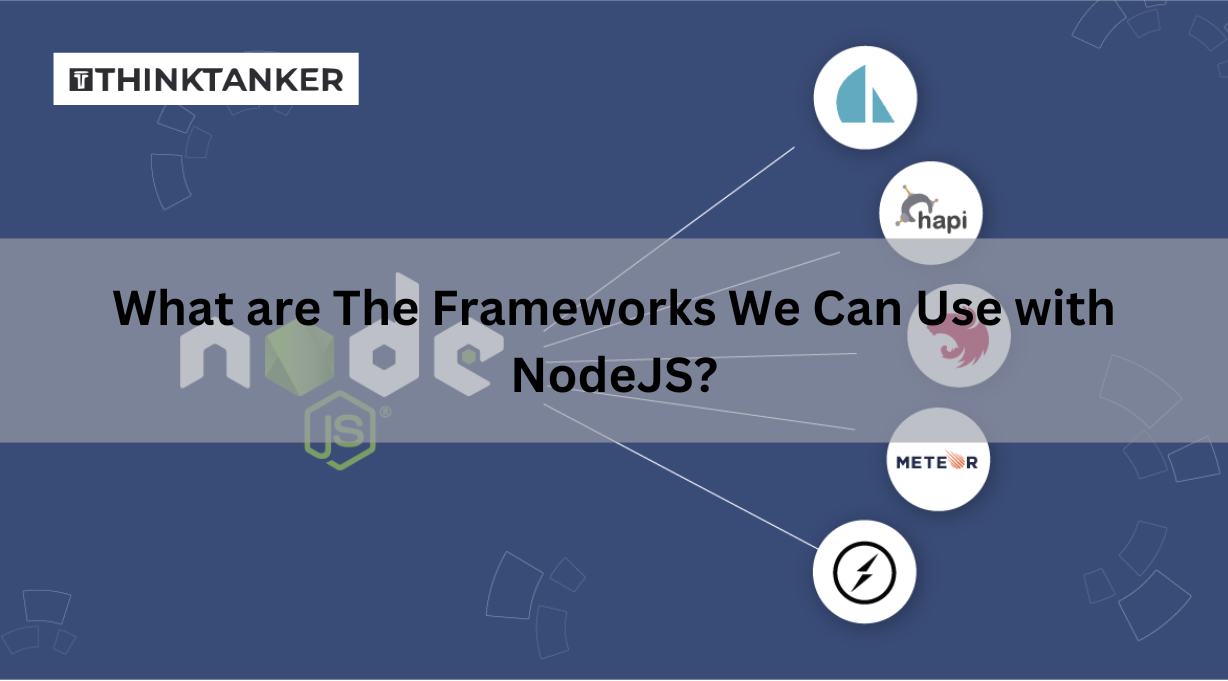Very Important Things to know about Node.js 15

Very Important Things to know about Node.js 15
We all have heard of Node.js, which was first introduced in 2009. Since then, many versions of the platform have been released, and the latest version is Node.js 15. Node.js 14 will be replaced by Node.js 15. However, long-term support will be available for Node.js 14. Innumerable developers and web development organizations use this amazing back-end, open-source, cross-stage JavaScript runtime system. You must hire nodejs developers professionals to leverage the benefits offered by the version.
The best thing about Node.js is that it has a unique event-driven design along with an offbeat IO. As a result, the web application improvement process becomes simple and more streamlined. Many leading brands are adopting the new version of Node.js. There are various improvements and changes that have taken place in Node.js 15 version with better features and attributes. In this article, we will discuss some interesting improvements and features of Node.js 15.
Interesting new features of Node.js 15
Node.js 15 comes with some brilliant new features. Some prominent ones among them include:
Abort controller
An experimental implementation of the Abort Controller can be seen in Node.js 15 version. This is effective in canceling some specific promise-based APIs. This is a worldwide utility class, which is deeply dependent on the web API. With the help of the Abort Controller, web developers will be able to terminate a minimum of one web request prematurely whenever required.
The cancellation feature in the Abort Controller had been discussed for a long, and now it has been implemented. As the feature stabilizes, the list of APIs, which support the abort feature will surely expand.
NPM 7
When it comes to Node.js 15, the most prominent feature that is implemented is that of NPM 7. NPM is regarded as the package manager of JavaScript, making it one of the largest software registries if you did not know. NPM 7 comes with unique features, among which workspace needs special mention. With workspace, the creation and management of NPM packages are supported in a single file system. There have been critical internal alterations in NPM 7, which enhances maintainability and reliability.
Some features of NPM 7 include:
Default peer dependencies
Manual installation of peer dependency for resolving various issues were common in NPM previously. In the current version, the feature is improved as peer conditions are introduced naturally.
Workplaces
Helps in managing different bundles from a singular top-level root bundle. Much awaited component, this comes with the new package-lock.json format. It helps in supporting the automatic installation of peer dependencies and also supports yarn.lock file.
New language features with the help of v8.6
Node.js 15, Node.js’s latest version, comes with V8 JavaScript runtime support. From 8.4, it has been refreshed to 8.6, along with innumerable important highlights and performance upgrades. V8 is the main and primary JavaScript engine on which Node.js runs.
The version V8 engine is bumped by Node.js 15 for moving from 8.4 to 8.6. V8 illustrates language features of JavaScript, which are readily available to developers. Some new dialects in this version will minimize the amount of code that needs to be written and developed. Moreover, the code becomes more intelligible.
N-API Version 7
Changes in Node.js 15 make it easy to assemble, make and uphold local modules, otherwise known as add-ons. Red Hat and IBM are continuous and dedicated supporters of N-API. The latest version of Node.js, which is the Node.js 15has N-API version 7. With the help of this upgradation, extra techniques are available for working with array buffers.
To burn through N-API, one popular approach is that of node-addon-API. Approximately more than 2 million downloads have taken place recently every week for this, which is a respected figure for sure. Precisely, with N-API version 7, stability can be maintained across various Node.js versions and, more importantly, at different compiler levels. To utilize such features, it is necessary to hire the apt nodejs development company.
Throw out unhandled rejections
Node.js 15, the latest version of Node.js, has one amazing change. It is about the management of unhandled rejected promises. In the previous versions, it was seen that a warning was given if a rejected promise was not handled properly and explicitly. In Node.js 15, there is a default mode for unhandled rejection, which is changed for raising some uncaught exception and ends the application.
A warning is currently thrown, which might prove to be a foul surprise in production if Node.js gets updated without knowing about this change. There is a global handler of the unhandled rejection event. By adding this, it is possible to obtain unhandled rejections, and you have the choice of thinking about how you want to continue. The accompanying codes will log the event, and the application will keep running, like all previous Node.js variants.
Experimental support for QUIC protocol (HTTP/3)
In Node.js 15, there is support for QUIC protocol. A UDP-based organization transport convention for HTTP/3, QUIC provides in-built security with TLS 1.3. It is possible to carry out functions like stream control, multiplexing, connection relocation, error adjustment, etc., with this system. Node.js 15 provides experimental support for this work through the QUIC configuration flag.
QUIC is a very useful, exploratory, and vital transport layer network protocol, which Google has planned. It is not only proficient and quick; it is actualized on UDP. QUIC protocol aims to minimize latency when contrasted with TCP. Some additional advantages of QUIC include error correction, flow control, TLS 1.3, and connection migration.
Experimental diagnostics channel module
Another exciting feature of Node.js 15 is that it depicts diagnostics_channel, another trial module. With this module, the publish-subscribe pattern is empowered. Engineers can utilize this pattern to distribute arbitrary information to a specific channel, which various applications or modules can further use. The module is made nonexclusive on purpose so that it can be used in myriad ways. It is possible to import and use the module immediately.
It is expected that more Node.js 15 patches and minor releases will come out in April 2021.
However, after that a new version of Node.js will be seen in the form of Node.js 16. This will be the next LTS release. Till then, developers will be happy using Node.js 15 for its amazing features.





